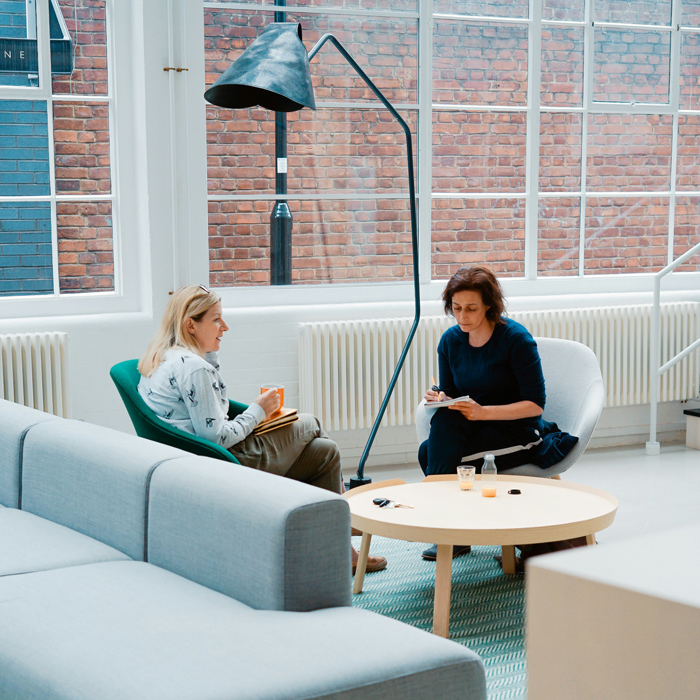Menopause in the Workplace: Supporting the Change
Written by Kate Usher, Menopause & Gender Equity Consultant at Menopause in Business. Originally published in Commercial Interiors UK Directory 2024
Menopause, it’s a woman’s thing. This has been the societal perception for some considerable time. After all, it is happening to women’s bodies.
It is no longer that simple, trans men and some non-binary people will have a menopause as well. In addition to this because of the nature of menopause and its dozens of symptoms – that is not a typo – those experiencing menopause can’t leave their symptoms in the creche outside the security barrier and they can’t be left off screen. They will be present for every meeting, interview and event, no matter what time of day or night it is.

Because of this we will all be experiencing other people’s menopause vicariously in varying degrees, no matter what our age or gender identity or whether we are menopausal or not. Because of this we all need to understand what menopause is. How it impacts those around us and the way they interact with space within our places of work. If we don’t know what it is, we have little to no hope of understanding the design considerations involved.
Organisations today are starting to recognise the criticality of menopause enabled workspaces and will look to the design community to seamlessly incorporate it into their schemes. For this to be possible there will need to be a level of comfort both in thinking and talking about it.
Importantly solutions must be inclusive to all as well as creative. Leave the desk fan in the drawer, it only helps one symptom and hot flushes are not ubiquitous.
Solutions are not just linked to the symptom but how women behave differently when experiencing them. Those that are obvious, which I have been discussing for years are the proximity of lockers to ladies’ toilets to give women dignity when certain symptoms occur. Signpost cooler and warmer areas, whether that be through solar gain or build idiosyncrasies that women are acutely aware of but have been ignored for decades. Lastly, a quiet space to deal with anxiety and the emotional response that many experience. Furniture should be not only ergonomic but aware of the need for comfort, as well as how women will use them. Benches and hard or moulded seating are often unsympathetic to a female physique, especially one that is going through significant hormonal changes. White or light-coloured seating is also to be avoided. It might look beautiful in the photos but can cause considerable embarrassment.
Being prepared to list menopause as one of the considerations in your design, show progressive and inclusive thinking that aligns with that of clients. It could be the difference that makes the difference.
Five tips to incorporate menopause into workplace design:
CHOICE OF WORKPLACE SETTINGS AND SPACES – Menopause is incredibly variable and changeable. Options help people to work in spaces that support them.
ARRANGEMENT – Place lockers near the washrooms to enable people to access them without embarrassment.
CONTROL OF ENVIRONMENT – Give people access to temperature control, whether that be themselves or someone else.
WELLBEING SPACES – Quiet private areas away from the workspace with privacy and cold drinking water. N.B. This is not the multi faith room, first aid room or the filing store.
ERGONOMIC FURNITURE – Be aware of comfort. Make it adjustable, accessible and in darker demure colours.

Kate Usher, Menopause & Gender Equity Consultant at Menopause in Business
Kate is a Menopause & Gender Equity Consultant, working for over ten years with women and organisations to create modern menopause conversations that enable women to stay in their chosen careers and achieve their professional ambitions. Prior to this she has 20 years’ experience leading IT transformation projects in FTSE100 organisations.




